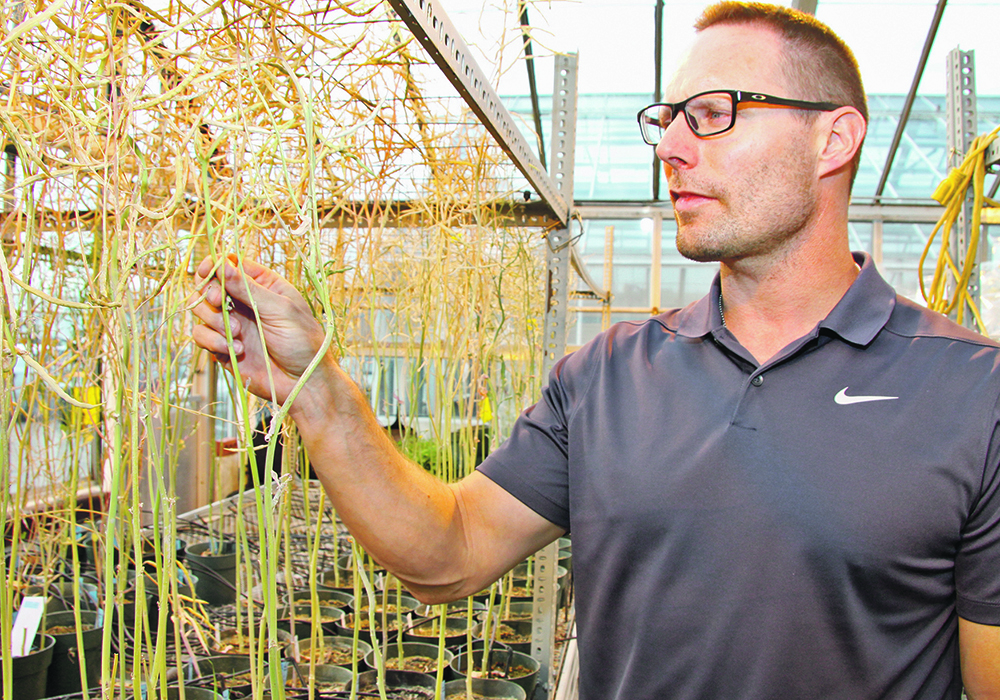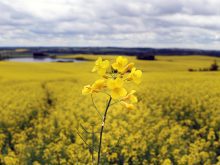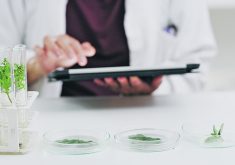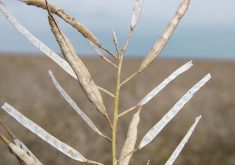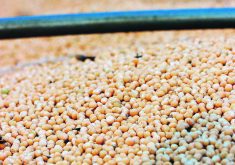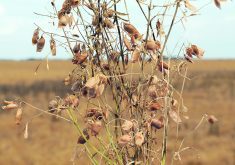In the 2020 Western Hockey League bantam draft, the Regina Pats had the first overall pick.
They selected Connor Bedard.
It was an easy pick and a good one.
Bedard recorded 100 points in the 2021-22 WHL season and 143 points last year.
Then, in June, the Chicago Blackhawks selected Bedard with the No. 1 pick in the 2023 NHL draft.
However, not every bantam hockey player in Western Canada is Connor Bedard.
Only a small percentage of bantams drafted into the WHL become regulars in the National Hockey League, and a tiny percentage become superstars.
For many reasons, it’s difficult to predict the future of a hockey player when he’s only 14 or 15 years old.
It’s especially hard in Round 5 of the WHL draft, when teams like the Regina Pats are selecting the 89th ranked bantam player in Western Canada.
That player could become great, average or below average.
But what if there was a better way to predict how a player turns out, a computer model that could evaluate a player’s traits — agility, skating speed and how many pounds they can bench press — and more accurately predict the player’s performance for the Pats when he was 18 or 19.
If the model worked and five percent of players became good enough to reach the NHL instead of two percent, then the Regina Pats would be a much better team, year after year.
“What’s your player selection success — two percent, three percent? Who comes out as a home run (or a hat trick)?” says Rob Duncan, who is not a WHL general manager but a canola breeder at the University of Manitoba.
“If you could turn that into eight percent … because you have their genotypic information and could (determine) who is going to be better in a (few years), that’s massive.”
Duncan used the hockey player analogy to explain what he does as a canola breeder — more accurately, how he uses a powerful breeding tool called genomic selection to deliver higher yielding and more resilient canola hybrids to Canadian farmers.
In the third week of October, inside a small conference room on the third floor of the university’s Plant Science building, Duncan was joined by two of his colleagues.
One was Curt McCartney, a wheat breeder, and the other was Sakaria Liban, a researcher at the U of M and an expert in genomic selection.
The three provided a brief history of plant breeding, highlighting that genetics and understanding of genes has been part of canola breeding for decades.
However, scientists only got a full look at the plant’s DNA nine years ago.
“The genome sequence of canola has uncovered the complexities which define this important crop,” Isobel Parkin, an Agriculture Canada scientist in Saskatoon and a contributor to the canola genome project, said in August of 2014.
“This knowledge will prove invaluable for making future agronomic improvements.”
Breeders had access to DNA markers for some traits before the canola genome was published, but the complete genome was expected to change the breeding game, said Wilf Keller, president of Ag-West Bio, also in 2014.
“The limited tools you had before were based on a little bit of DNA information from a very specific region. It would be like looking at a map from (Saskatoon) to Yorkton and you’d see the little stretch that takes you through Foam Lake and Wynyard, but you don’t see all the information … every pothole, every hill, every ravine, every slough,” he said.

“You’ll see all of that now, not just the odd spot here or there.”
Keller and Parkin were correct.
Having the full genome has changed how breeders develop new canola hybrids, but it took several years to take advantage of the newfound information.
A big reason was cost.
“The canola genome was published in 2014, but it was still too expensive for a breeding program to use,” Liban said.
“You’re not going to blow your whole budget on that, sequencing one individual (canola line).”
Only the global crop science companies, such as Bayer or BASF, could afford to spend thousands of dollars studying the DNA of a promising line of canola.

In the last several years the cost of the technology decreased “like crazy,” Liban said.
It’s now possible to get detailed genetic info for one canola line at the price of two beers at an NHL hockey game.
“There’s one company we send our samples to, we pay $25 for 19,000 positions (on the genome),” Liban said.
The 19,000 positions are only a fraction of the one billion base pairs in the DNA of canola, but it’s still a substantial amount of genetic information, which breeders can use to predict if a specific line of canola will be successful in the field or not.
For about 20 years, crop breeders relied on marker-assisted selection to identify a gene or two that they wanted to pass on to the next generation.
“Scientists use what are called molecular or genetic markers. The markers are a string or sequence of nucleic acid which makes up a segment of DNA,” says ISAAA.org.
However, having one marker is different from genomic selection.
“Marker assisted selection, you’re looking at just one position of that billion (in the canola genome),” Liban said.
“But one position that’s really, highly important.”
A simple example is eye colour in humans.
There could be one gene that is highly correlated to blue eyes. Identifying that one gene would be marker-assisted selection.
However, there are different shades of blue eyes, from grayish blue to a rich, dark blue.
The actor Elizabeth Taylor was famous for her dark blue, nearly purple eyes.
“Even for human eye colour, there is a variation of hues. It (depends) not just on the high importance gene, but thousands of genes across the whole genome,” Liban said.
Crop breeders aren’t normally interested in the colour of plants or the shade of yellow of canola flowers.
However, genomic selection, or genome wide selection, can pinpoint dozens or hundreds of genes that are connected to a desired trait such as yield.
“For genomic selection, we’re selecting across the entire genome. We know this one (marker) maybe is associated with yield…. It, along with another 1,000 markers, are associated with yield,” said Duncan, who grew up on a farm south of Winnipeg.
Hunched over his laptop computer, Liban looked at a screen with numbers coloured yellow, orange and green. The data is overwhelming and hard to decipher for a layperson, but it’s genetic data for a line of canola in development.
Liban waved his finger at one part of the screen, pointing out genes that provide resistance to blackleg, a common disease in canola.
All this genetic data on disease resistance, yield, heat tolerance and other traits helps breeders select the best canola cultivars for further testing.
Returning to the Regina Pats example, it’s like hockey scouts selecting the best possible bantam players to try out for the team.
The difference is that Duncan has genetic data to make his selections.
Plant breeders didn’t have this genomic information 50 years ago. They might have randomly picked 100 canola crosses for testing in the field, which could have included 10 winners, 10 losers and 80 that would have been average.

“In a typical breeding population, you make all these crosses. You can’t test all of them,” he said, while standing in front of a whiteboard inside the conference room.
“You will get variation…. You will have some high yielding individuals and some low-yielding individuals.”
The advantage of genomic selection is that breeders can pick the best of the best.
Instead of testing 100 and only finding 10 with potential, they can now test 100 cultivars with strong potential.
“With genomic selection, you’re testing the same population size, but now you’re testing a population that has an improved mean (higher average for yield and other traits),” Duncan said.
“What has changed is the quality of the populations.”
Having a tool such as genomic selection is valuable, but good genetics can only take you so far. The canola cultivar has to perform under field conditions in Western Canada.
How they respond to factors such as sunlight, heat, nutrients in the soil and disease pressure is known as phenotyping.
“Phenotype would be what you could measure or observe in the field trial,” said McCartney, the U of M cereal breeder.
“The genotype would be the actual DNA in that breeding line. That (genotype) is fixed, but the phenotype varies at every location you test.”
Returning to the junior hockey analogy, a 16-year-old entering the Western Hockey League might have great genetics because his dad was a NHL player.
But he has to perform in the Western Hockey League environment.
That environment could be a tough road game versus the Prince Albert Raiders, shooting against the best goalie in the league.
Monitoring how a cultivar performs in the real world is not going away. It will continue to be a key component of plant breeding.
“The phenotyping hasn’t changed…. From 1900 to today, we’re still doing phenotyping,” Liban said.
“What we’re doing now is we’re only phenotyping things that we know have the traits of interest.”
Duncan stood up and walked over to the whiteboard in the conference room to explain the importance of phenotyping data.
He wrote an equation on the board: Model = G X P. The G stands for genetics and the P for phenomics.
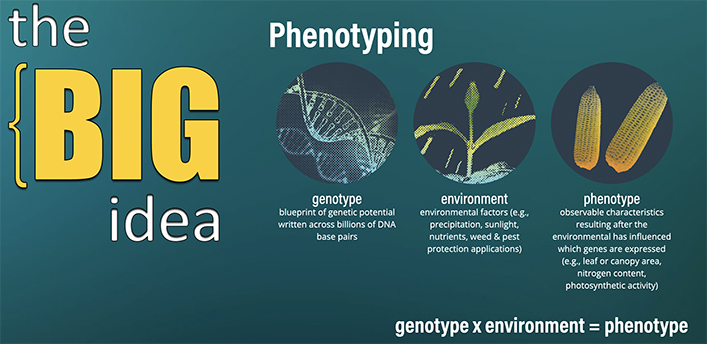
Plant breeders use the genetic data and the results from plot trials (phenomics). Then they feed that data into a machine-learning model or mathematical model.
The model helps them predict how a canola cultivar with a set of desirable genes will perform in the real world.
“You’re using the field data and correlating it with DNA markers,” said McCartney, who is from the area northwest of Portage la Prairie, near Westbourne, Man.
“You test new breeding material with those same DNA markers and you can predict how they’ll perform in field trials in terms of all the traits you’ve measured in the past. That’s the idea with genomic prediction.”
After 70 minutes of explanations and drawings on the white board, Duncan summarized what this modern plant breeding technology means for canola growers.

From 2000-20, average canola yields on the Prairies went from about 23 bushels per acre to 40 bu. Some of those yield gains came from blockbuster innovations, such as herbicide tolerance and pod shatter resistance, and a portion of the gains came from year-over-year improvements in canola hybrids.
Using genomic selection and computer models that predict how promising cultivars will perform in the field, breeders can produce varieties that are maybe three percent better than the old ones — higher yielding, deeper roots, maybe more tolerance to heat in July.
“Your rate of genetic gain … the amount of improvement you’re making every generation, can be higher when you (use) this genetic selection,” Duncan said.
A yield gain of three percent isn’t noticeable right away, but if breeders can repeat the three percent increase in each new generation, canola hybrids released in 2035 will have much higher yield potential than the varieties of today.
“That genetic gain … is going to (go up) a steeper slope,” Liban said.
Genomic selection isn’t a blockbuster technology that will push yields 20 percent higher overnight.
It’s another tool for plant breeders, Duncan said — a powerful one, but still a tool.
“Ultimately, (it) means I’m going to be registering a better product, sooner, and getting that to the farmers, sooner.”


